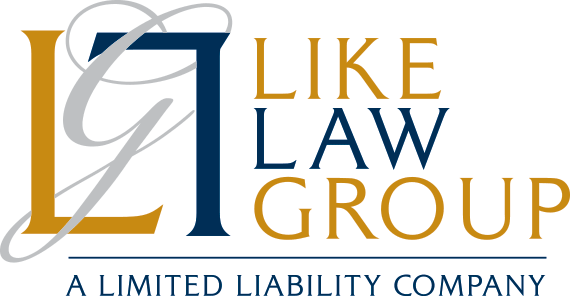Trusts are widely used in estate planning to protect and transfer a person’s assets (money, accounts, property, etc.), sometimes in a tax-advantaged manner. Some trusts are highly complex, with multiple parties, intricate structures, specialized legal terms, and references to arcane tax law that can be difficult for the average person to understand.
Scammers have long taken advantage of this complexity to dupe taxpayers into too-good-to- be-true trust solutions. The Internal Revenue Service (IRS) recently drew attention to a trust tax avoidance scheme involving what are known as § 643(b) trusts.1 It also warns about another type of trust scam that relies on the so-called pure trust or constitutional trust to make false claims about avoiding taxes and protecting assets.2
While legitimate trusts can be powerful tools for estate planning, asset protection, and tax efficiency, fraudulent trusts misuse these principles to deceive individuals. The IRS pays close attention to potential trust tax evasion schemes, and taxpayers who fall victim to a trust scam could potentially face civil and even criminal penalties, making it crucial to create a trust only with a qualified, reputable estate planning attorney.
Trust Scams on the Rise
According to the IRS, in the past few years there has been a “proliferation of abusive trust tax evasion schemes”3 targeting wealthy individuals, small-business owners, and professionals such as doctors and lawyers. These schemes falsely promise benefits such as
- the reduction or elimination of taxes,
- reduction or elimination of income subject to tax,
- depreciation deductions, and
- a step-up in basis for trust assets.4
These trust scams commonly use a layered structure to give the appearance that a taxpayer does not control the trust when in fact they do. Transparency of control over trust assets is important in determining, among other things, which party is responsible for paying any corresponding tax liability.
The IRS also notes that abusive trust schemes frequently entail multiple trusts that distribute assets to one another.5 Trust funds may flow from one trust to another using rental agreements, fees for services, purchase and sales agreements, and distributions, with the goal of using inflated or nonexistent deductions to “reduce taxable income to nominal amounts,” says the IRS.6
Trust scam promoters typically charge $5,000 to $70,000 for a package that comes with trust documents, trustees, and tax return services, adding to the appearance of legitimacy.7 However, the IRS cautions that these phony trust arrangements will not produce the promised tax benefits.8
Types of Trust Scams
The Pure Trust Scam
One type of trust scheme highlighted by the IRS involves the transfer of a business to a trust it calls a pure trust or constitutional trust.9 The pure trust scam makes it look as though the taxpayer has given up control of their business even though they still run its day-to-day activities and control the income stream.10
Promoters of such scams often claim that placing assets in a pure trust can exempt them from taxes.11 They use misleading language and pseudolegal jargon to make it seem like these trusts have special legal status and may claim that they are based on common law or constitutional principles exempting them from state or federal jurisdiction. However, the IRS clarifies that there is no legal basis for these claims.12
Actor Wesley Snipes is a notable example of someone misled by a variation of the pure trust scam. Snipes relied on an argument that courts have repeatedly rejected—the “861 argument,” which misinterprets § 861 of the Internal Revenue Code (I.R.C.) to falsely claim that domestic income is not taxable.13
The IRS alleged that Snipes did not file tax returns for several years and committed fraud.14 He was convicted of tax evasion charges and served time in federal prison, in addition to owing back taxes, penalties, and interest.15
643(b) Trust Scams
Versions of the pure trust scam date back decades. Despite increased awareness of these scams and the IRS pursuing them in their various iterations, they continue to resurface, often rebranded under different names such as complex trusts and patriot trusts or targeting new demographics.
The IRS details one such rebranding of the pure trust scam in a 2023 memorandum challenging trusts that similarly—and just as falsely—claim to avoid income and capital gains taxes.16
Promoters assert that these trust arrangements receive special tax benefits under I.R.C. § 643(b), hence the name 643(b) trusts. The IRS refers to them in the memorandum as a nongrantor, irrevocable, complex, discretionary, spendthrift trust—a complicated name for a complicated scam that, like the pure trust scam, relies on a misinterpretation of the tax code that takes it out of context.17
Although 643(b) trust scams take various forms, they are essentially a new twist on the old idea that, through manipulation of the trust structure, the taxpayer can use a backdoor method to maintain some control over the trust and avoid taxes.
The basic (but false) premise of the 643(b) scam is that income allocated to the corpus (principal) of the trust is not subject to taxation.
Promoters create a trust structure, often referred to with terms like nongrantor, irrevocable, and complex. The taxpayer transfers assets such as a business, real estate, or other income-producing assets into the trust in exchange for a promissory note. The trust then leases the assets back to the taxpayer, an arrangement that makes it seem like the income generated by the assets is not actually being distributed to the taxpayer, and is thus nontaxable.
The IRS explicitly rejects the validity of this arrangement in its memorandum, emphasizing that simply allocating income to the trust’s corpus does not exclude it from taxation.18
How to Spot a Trust Scam
The IRS has made it clear that it will challenge § 643(b) trusts in all forms, so taxpayers should look out for this and other trust schemes to avoid getting caught in the government’s compliance crosshairs.
As noted in the IRS memo, illegitimate trusts that misinterpret § 643 often have the guise of legitimacy and may even have legitimate-appearing promoters such as lawyers, accountants, and enrolled agents.19 Promotional materials may consist of a series of presentations, informational websites, documents, and legal opinions. In the case of a nongrantor, irrevocable, complex, discretionary, spendthrift trust, the trust may be described as “§ 643 compliant” or “in compliance with the I.R.C.”20
More generally, taxpayers should be on the lookout for these common trust scam red flags:
- Exaggerated claims. Taxes are as unavoidable as death for a reason. No legal trust strategy can entirely eliminate tax obligations. Claims about deferring taxes instead of avoiding them may sound more reasonable but could be part of the scam.
- “Secret” loopholes. While tax law is complex, it is not a secret. Legitimate strategies are based on established legal principles. Scammers also like to tell potential victims that wealthy individuals use certain trust types to avoid paying taxes.
- Terms that give an air of legitimacy. Trust schemes may reference and misuse terms such as common law or sovereign to promote trusts as beyond the legal jurisdiction of the federal government. Taxpayers in the 643(b) scam are told that they will serve as “Compliance Overseer.”21
- Pressure tactics. In a classic scammer technique, trust scheme promoters may push individuals to “act quickly” to secure the “exclusive opportunity” and create a sense of urgency that pressures them into making a rash decision without fully understanding the consequences.
- Complicated and confusing structures. Trust, tax, and estate planning law are inherently complicated, but complexity can also serve to hide a scam. Multiple trusts with confusing names and structures can be a way to obfuscate the scheme’s true nature.
- Lack of transparency. Promoters may be reluctant to provide clear explanations or documentation about how the trust works, relying on anecdotal evidence or testimonials rather than facts and legal analysis.
- Similarity to known scams. Many trust scams are the taxation equivalent of “old wine in new bottles.” Learning how to spot a scheme and cross-checking a trust strategy against known scams, including those in the IRS Dirty Dozen22 and other public warnings, can reduce vulnerability.
Above all, avoid promotions that sound too good to be true, verify the promoter’s credentials, and always seek a second opinion from an independent estate planning attorney before creating any trust. If you are considering setting up a trust, consult with a qualified estate planning attorney.
- I.R.S. Chief Couns. Mem. AM 2023-006 (Aug. 18, 2023), https://www.irs.gov/pub/lanoa/am-2023-006-508v.pdf. ↩︎
- Abusive trust tax evasion schemes – Facts (Section III), IRS (Mar. 29, 2024), https://www.irs.gov/businesses/small-businesses-self-employed/abusive-trust-tax-evasion-schemes-facts-section-iii. ↩︎
- Abusive trust tax evasion schemes – Facts (Section I), IRS (Mar. 29, 2024), https://www.irs.gov/businesses/small-businesses-self-employed/abusive-trust-tax-evasion-schemes-facts-section-i. ↩︎
- Id. ↩︎
- Id. ↩︎
- Id. ↩︎
- Id. ↩︎
- Id. ↩︎
- Abusive trust tax evasion schemes – Facts (Section III), supra note 2. ↩︎
- Id. ↩︎
- Jay Adkisson, The Complex Trust Is Simply The Criminal Tax Evasion Device Known As The Pure Trust Repackaged, Forbes (Aug. 18, 2021), https://www.forbes.com/sites/jayadkisson/2021/08/18/the-complex-trust-is-simply-the-criminal-tax-evasion-device-known-as-the-pure-trust-repackaged. ↩︎
- I.R.S., U.S. Dep’t of the Treas., Recognizing Illegal Tax Avoidance Schemes, Pub. No. 3995 (2024), https://www.irs.gov/pub/irs-pdf/p3995.pdf. ↩︎
- Rick Cundiff, Trial notebook: Courts don’t buy the ‘861 argument,’ Ocala StarBanner (Jan. 23, 2008), https://www.ocala.com/story/news/2008/01/24/trial-notebook-courts-dont-buy-the-861-argument/31235965007. ↩︎
- United States v. Snipes, No. 5:06-cr-22(S1)-Oc-10GRJ, 2007 WL 2572198 (M.D. Fla. 2007), https://abcnews.go.com/images/WNT/061017_Indictment_Snipes.pdf. ↩︎
- Siobhan Morrissey, Wesley Snipes Sentenced to Three Years in Jail, People (Apr. 24, 2008), https://people.com/crime/wesley-snipes-sentenced-to-three-years-in-jail. ↩︎
- I.R.S. Chief Couns. Mem. AM 2023-006, supra note 1. ↩︎
- Id. ↩︎
- Id. ↩︎
- Id. ↩︎
- Id. ↩︎
- Id. ↩︎
- Dirty Dozen, IRS (June 12, 2024), https://www.irs.gov/newsroom/dirty-dozen. ↩︎












